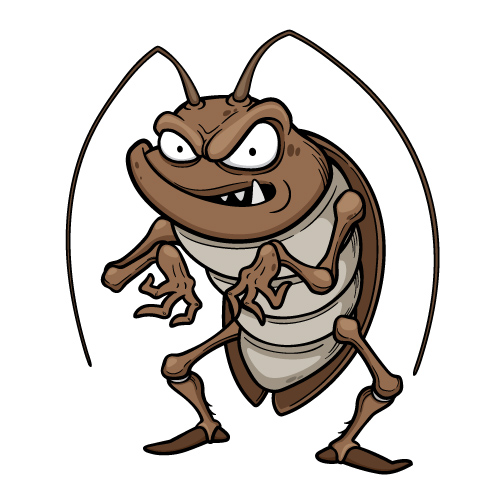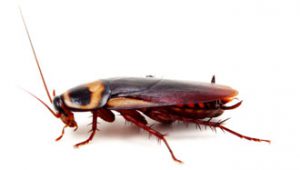
15 May Cockroaches
 Most species of cockroach are about the size of a thumbnail, but several species are bigger. The world’s heaviest cockroach is the Australian giant burrowing cockroach Macropanesthia rhinoceros, which can reach 9 cm (3.5 in) in length and weigh more than 30 g (1.1 oz). Comparable in size is the Central American giant cockroach Blaberus giganteus, which grows to a similar length. The longest cockroach species is Megaloblatta longipennis, which can reach 97 mm (3.8 in) in length and 45 mm (1.8 in) across.[19] A Central and South American species, Megaloblatta blaberoides, has the largest wingspan of up to 185 mm (7.3 in).
Most species of cockroach are about the size of a thumbnail, but several species are bigger. The world’s heaviest cockroach is the Australian giant burrowing cockroach Macropanesthia rhinoceros, which can reach 9 cm (3.5 in) in length and weigh more than 30 g (1.1 oz). Comparable in size is the Central American giant cockroach Blaberus giganteus, which grows to a similar length. The longest cockroach species is Megaloblatta longipennis, which can reach 97 mm (3.8 in) in length and 45 mm (1.8 in) across.[19] A Central and South American species, Megaloblatta blaberoides, has the largest wingspan of up to 185 mm (7.3 in).
Cockroaches are generalized insects, with few special adaptations, and may be among the most primitive living neopteran insects. They have a relatively small head and a broad, flattened body, and most species are reddish-brown to dark brown. They have large compound eyes, two ocelli, and long, flexible antennae. The mouthparts are on the underside of the head and include generalized chewing mandibles, salivary glands and various touch and taste receptors.
The body is divided into a thorax of three segments and a ten-segmented abdomen. The external surface has a tough exoskeleton which contains calcium carbonate and protects the inner organs and provides attachment to muscles. It is coated with wax to repel water. The wings are attached to the second and third thoracic segments. The tegmina, or first pair of wings, are tough and protective, lying as a shield on top of the membranous hind wings, which are used in flight. All four wings have branching longitudinal veins, and multiple cross-veins.
The three pairs of legs are sturdy, with large coxae and five claws each.They are attached to each of the three thoracic segments. The front legs are the shortest and the hind legs the longest, providing the main propulsive power when the insect runs. The spines on the legs were earlier considered to be sensory, but observations of the insect’s gait on sand and wire meshes have demonstrated that they help in locomotion on difficult terrain. The structures have been used as inspiration for robotic legs.
The abdomen has ten segments, each with a pair of spiracles for respiration. Segment ten bears a pair of cerci, a pair of anal styles, the anus and the external genitalia. Males have an aedeagus through which they secrete sperm during copulation and females have spermathecae for storing sperm and an ovipositor through which the ootheca is laid.
